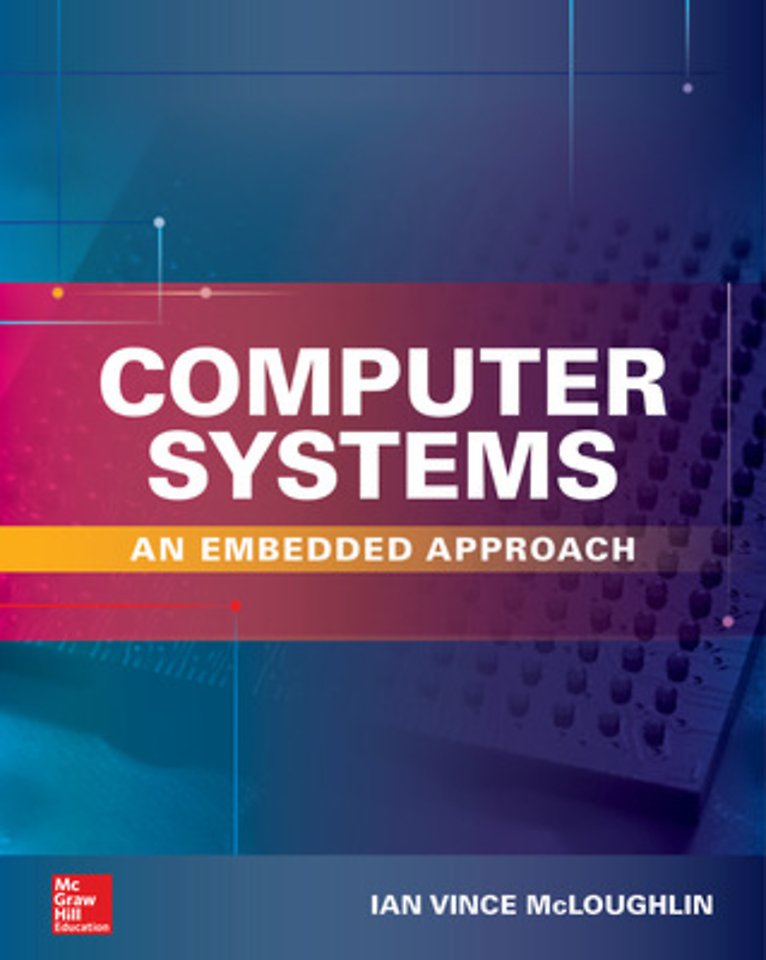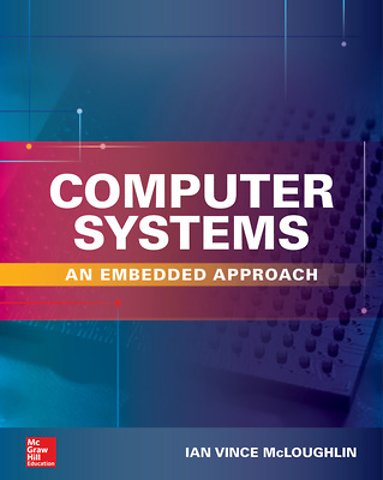Computer Systems: An Embedded Approach
Samenvatting
Publisher's Note: Products purchased from Third Party sellers are not guaranteed by the publisher for quality, authenticity, or access to any online entitlements included with the product.
Incorporate embedded computing technology in projects and devices of all sizes
This comprehensive engineering textbook lays out foundational computer architecture principles and teaches, step by step, how to apply those concepts in cutting-edge embedded applications. The book includes everything you need to know about embedded computing—from fundamentals and processor internals to networking and connectivity.
Computer Systems: An Embedded Approach begins by thoroughly explaining constituent hardware components, including processors, storage devices, and accelerators. From there, the book shows how operating systems work and how they provide a layer of services between hardware and software. You will get coverage of foundational networking, pervasive computing concepts, and the Internet of Things (IoT). The book concludes with a look to the future of embedded computing systems.
• This single resource takes readers right up to being ready to learn programming
• Covers code aspects from the IEEE, POSIX, and OSI models
• Written by a recognized academic and experienced author
Specificaties
Inhoudsopgave
0.2.3 Transmission <br/> 10.2.4 Receiving <br/> 10.2.5 Error Handling <br/> 10.2.6 Connection Management <br/> 10.3 Scalability, Efficiency, and Reuse <br/> 10.4 OSI Layers <br/> 10.5 Topology and Architecture <br/> 10.5.1 Hierarchical Network <br/> 10.5.2 Client-Server Architecture <br/> 10.5.3 Peer-to-Peer Architecture <br/> 10.5.4 Ad Hoc Connection <br/> 10.5.5 Mobility and Handoff <br/> 10.6 Summary <br/> 10.7 Problems <br/> 11 Networking <br/> 11.1 The Internet <br/> 11.1.1 Internet History <br/> 11.1.2 Internet Governance <br/> 11.2 TCP/IP and the IP Layer Model <br/> 11.2.1 Encapsulation <br/> 11.3 Ethernet Overview <br/> 11.3.1 Ethernet Data Format <br/> 11.3.2 Ethernet Encapsulation <br/> 11.3.3 Ethernet Carrier Sense <br/> 11.4 The Internet Layer <br/> 11.4.1 IP Address <br/> 11.4.2 Internet Packet Format <br/> 11.4.3 Routing <br/> 11.4.4 Unicasting and Multicasting <br/> 11.4.5 Anycasting <br/> 11.4.6 Naming <br/> 11.4.7 Domain Name Servers <br/> 11.5 The Transport Layer <br/> 11.5.1 Port Number <br/> 11.5.2 User Datagram Protocol <br/> 11.5.3 Transmission Control Protocol <br/> 11.5.4 UDP versus TCP <br/> 11.6 Other Messages <br/> 11.6.1 Address Resolution Protocol <br/> 11.6.2 Control Messages <br/> 11.7 Wireless Connectivity <br/> 11.7.1 WiFi <br/> 11.7.2 WiMax <br/> 11.7.3 Bluetooth <br/> 11.7.4 ZigBee <br/> 11.7.5 Near-Field Communications <br/> 11.8 Network Scales <br/> 11.9 Summary <br/> 11.10 Problems <br/> 12 The Future <br/> 12.1 Single-Bit Architectures <br/> 12.1.1 Bit-Serial Addition <br/> 12.1.2 Bit-Serial Subtraction <br/> 12.1.3 Bit-Serial Logic and Processing <br/> 12.2 More-Parallel Machines <br/> 12.2.1 Clusters of Small CPUs <br/> 12.2.2 Parallel and Cluster Processing Considerations <br/> 12.2.3 Interconnection Strategies <br/> 12.3 Asynchronous Processors <br/> 12.3.1 Data Flow Control <br/> 12.3.2 Avoiding Pipeline Hazards <br/> 12.4 Alternative Number Format Systems <br/> 12.4.1 Multiple-Valued Logic <br/> 12.4.2 Signed Digit Number Representation <br/> 12.5 Optical Computation <br/> 12.5.1 The Electro-Optical Full Adder <br/> 12.5.2 The Electro-Optic Backplane <br/> 12.6 Science Fiction or Future Reality? <br/> 12.6.1 Distributed Computing <br/> 12.6.2 Wetware <br/> 12.7 Summary <br/> A Standard Memory Size Notation <br/> B Standard Logic Gates <br/> Index
Net verschenen
Rubrieken
- aanbestedingsrecht
- aansprakelijkheids- en verzekeringsrecht
- accountancy
- algemeen juridisch
- arbeidsrecht
- bank- en effectenrecht
- bestuursrecht
- bouwrecht
- burgerlijk recht en procesrecht
- europees-internationaal recht
- fiscaal recht
- gezondheidsrecht
- insolventierecht
- intellectuele eigendom en ict-recht
- management
- mens en maatschappij
- milieu- en omgevingsrecht
- notarieel recht
- ondernemingsrecht
- pensioenrecht
- personen- en familierecht
- sociale zekerheidsrecht
- staatsrecht
- strafrecht en criminologie
- vastgoed- en huurrecht
- vreemdelingenrecht

